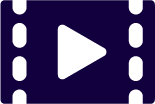Client Factors
Client factors refer to “specific capacities, characteristics, or beliefs that reside within the person, group, or population and influence performance in occupations,” as divided into the following categories (AOTA, 2020, S15):
a) Values, beliefs and spirituality
Values, beliefs and spirituality refer to client’s “perceptions, motivations, and related meaning that influence or are influenced by engagement in occupations” (AOTA, 2020, S51).
b) Body functions
Body functions refer to “the physiological function of body systems (including psychological functions)” (AOTA, 2020, S51). Examples of body functions include attention, memory, proprioception, touch, pain, joint mobility, strength, muscle tone, muscle endurance, and breathing.

Related ICE Videos
Ventilator Part 1: Breathing and Suctioning with Respiratory Therapy
Search the ICE Video Library for the titles below, or for keywords such as: range of motion, strength, sensation, endurance, and respiratory.
Radial Fracture, Patient Education 3: AROM Program
Radial Fracture, Part 5: Measuring Hand Strength
Total Knee Replacement, 14 days post: Knee Mobilization
Total Knee Replacement, 7 days post: Strengthening with a Balance Disc
Rotator Cuff Repair, Part 3: Increasing ROM in Shoulder Flexion
Ventilator Part 1: Breathing and Suctioning with Respiratory Therapy
c) Body structures
Body structures refer to “the anatomical parts of the body, such as organs, limbs, and their components” (AOTA, 2020, S54). Examples of body structures include (1) bones and muscles that support musculoskeletal functions and (2) heart and blood vessels that support cardiovascular function. “Occupational therapy practitioners have knowledge of body structures and understand broadly the interaction that occurs between these structures to support health, well-being, and participation in life through engagement in occupation” (AOTA, 2020, S54).

Related ICE Videos
Search the ICE Video Library for the titles below, or for keywords such as muscle and skin.
Total Knee Replacement, 7 days post: Initial Exam
Radial Fracture, Part 3: Measuring ROM
Rotator Cuff Repair, Part 1: Initial Assessment
Questions
Ask these questions when watching the related videos.
How do you think this individual’s disability affects the way they see the world? How would a sudden disability affect the way you see the world, including your purpose in the world and what you view as worthwhile?
How do body functions, such as strength, range of motion, balance, and respiratory endurance, affect one’s ability to engage in occupations?
How are body functions and body structures interrelated?
Does the absence of a particular body function or structure mean that the individual will not be able to engage in a particular life task? For example, if someone is lacking the ability to move their right arm, does this mean that they will not be able to get dressed?
How do occupational therapy practitioners help others modify tasks to enable success despite impaired body functions and structures?

